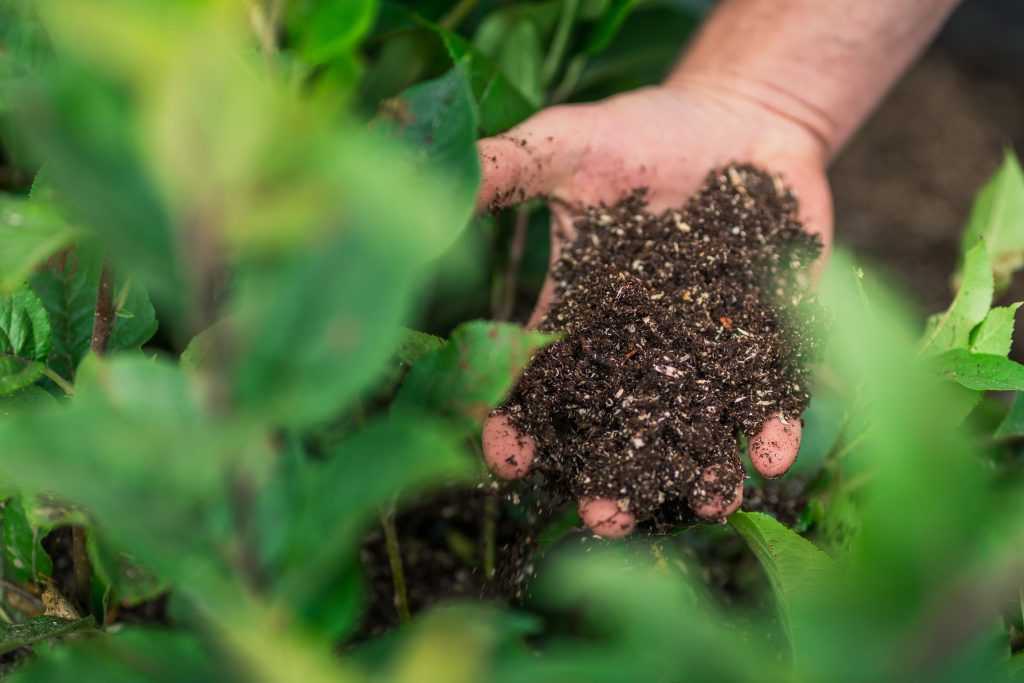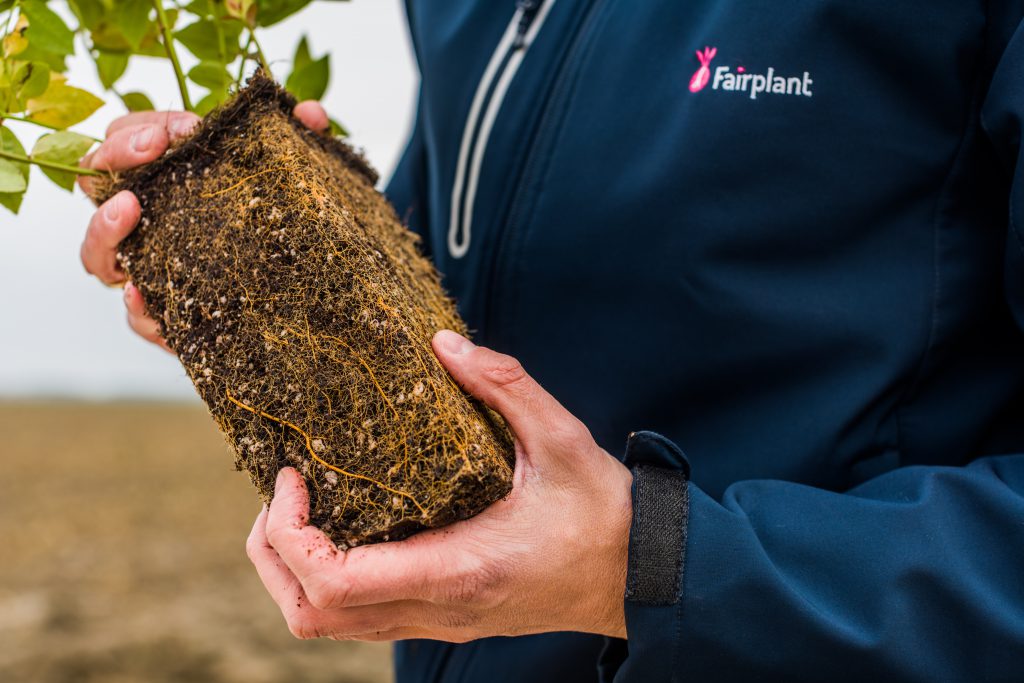To achieve the best quality of plants there are many factors that contribute. We already discussed some of these aspects in our previous blogs. But until now we didn’t discuss maybe one of the most important ones; Fertilize your soil.

Fertilizing is of course important for all crops, but maybe even more so for rootstocks. Our stoolbeds are on the same plot of land for (more than) 25 years. We need to keep the nutrient levels and soil condition in excellent shape. Luckily our starting point is already good, with the fertile polder soil. But what makes our soil so good?
The top layer of our soil is mostly comprised of clay. Clay, just like organic matter, has the ability to bind nutrients in the soil. This is called the cation exchange capacity. Positively charged nutrients are binding to negatively charged clay particles. The higher the percentage of clay, the more space for nutrients to bind. These binded nutrients can exchange to the soil water and in this form they will be available for the plant. You can see this as a big parking for cars, the more space the more cars. This makes that there are always enough nutrients available for the plants to grow.
The soil alone is of course not enough. When we are harvesting the plants each winter, we are taking nutrients away from the field. These need to be replenished to ensure the next harvest will be as good as the last. We do this in two ways, a base gift on the whole field and via leaf fertilizers. The base gift makes sure that most of the macro nutrients (nitrogen, phophorus and kalium) are on the required levels. During the season we look at what the plants need and react accordingly with leaf fertilizers.

Each year we take soil samples to see what nutrient levels are and if these nutrients are available for the plant. Next to that it also gives us information about the capacity of the soil to bind nutrients and soil life. With this information in mind we go to work.
Fairplant predominantly uses fertilizers from organic sources. We look for a good blend of macro and micro nutrients. Which come available during the growing season. Next to the required nutrients, the added amino acids increase the soil and crop health. So a good combo for a sustainable way of growing our rootstocks!
